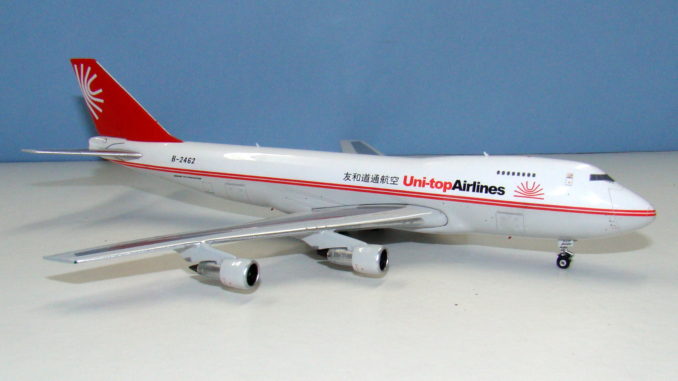
The 747 is truly something special in aviation history and it saddens me to see them rapidly departing the world’s airline fleets. There were 205 747-100s and 393 747-200s built but with production ending in 1991 time for even the newest frames is swiftly running out. In fact it has already run out for the series 100 with Iran Air operating the last in 2014. In 1:400 scale Phoenix are the only manufacturer making many 747s and I have long avoided them considering what I have seen of the moulds in use; but no more – let’s see what their 200 is like.
THE REAL THING
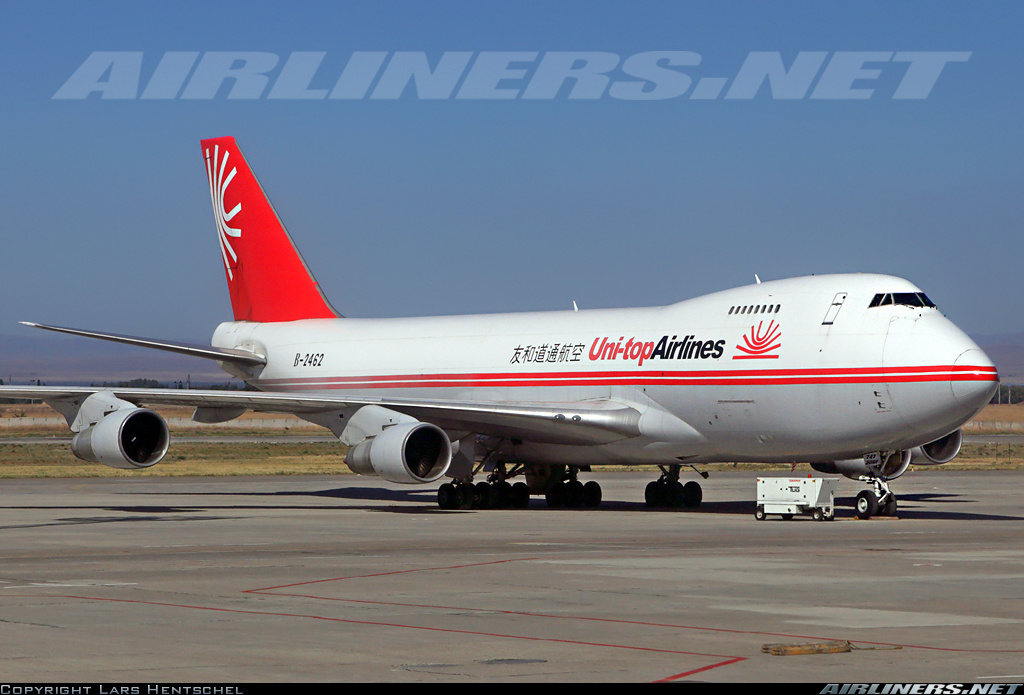
The 747-200 continues in service however by mid-2017 only 8 remained in service worldwide. These were almost universally with obscure cargo airlines you are unlikely to know much about like Fars Air Qeshm, Fly Pro, TCA The Cargo Airlines and TransAVIexport Airlines. The closest thing to a major operator that was using the 747-200 last year was Chinese Uni-top Airlines however it now appears that they too have retired their last 747 Classics.
The Chinese cargo airline market nowadays consists mainly of the cargo arms of the big four groupings (Air China Cargo, China Cargo, China Southern Cargo and Suparna Airlines) with the remainder of the carriers (SF Airlines, China Postal, YTO Express etc) specialising in small package operations. Uni-top is seemingly different and more like failed predecessors Jade Cargo and Grandstar in that it operates only widebodies.
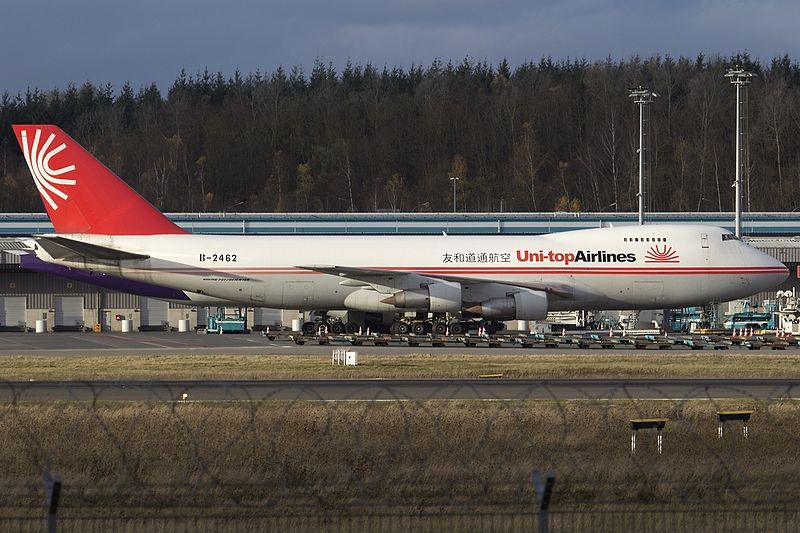
Uni-top’s operations began in only 2011, from its Wuhan base. The airline is a joint venture between Shenzhen Municipal Uni-top Industry and Shenzhen Daotong Industry. The initial fleet was a trio of ex-Air China 747-2J6 freighters. Two of these (B-2448 and B-2450) had been converted from Combis into full freighters but the third, B-2462, had been delivered to Air China in October 1990 as a full freighter.
Uni-top’s has sought to supplement the 747s by acquiring 7 of China Eastern’s A300-600Rs for conversion into freighters. The first of these was delivered after conversion by EADS in Dresden in late July 2015. Thus far only 4 of the A300s have been converted and of those not all appear to be in service. Indeed Uni-top has the air of a rather fly by night operation. Accordingly in July 2015 it was involved in the transport of 24 Elephant calves from Zimbabwe to the Chimelong Safari Park in China. This was one of several shady deals to transport live Elephants from a questionable government to a facility with questionable capability to manage the animals for questionable reasons, possibly linked to China’s belated ban in the trade of ivory. It appears B-2462 was the aircraft used for this purpose.
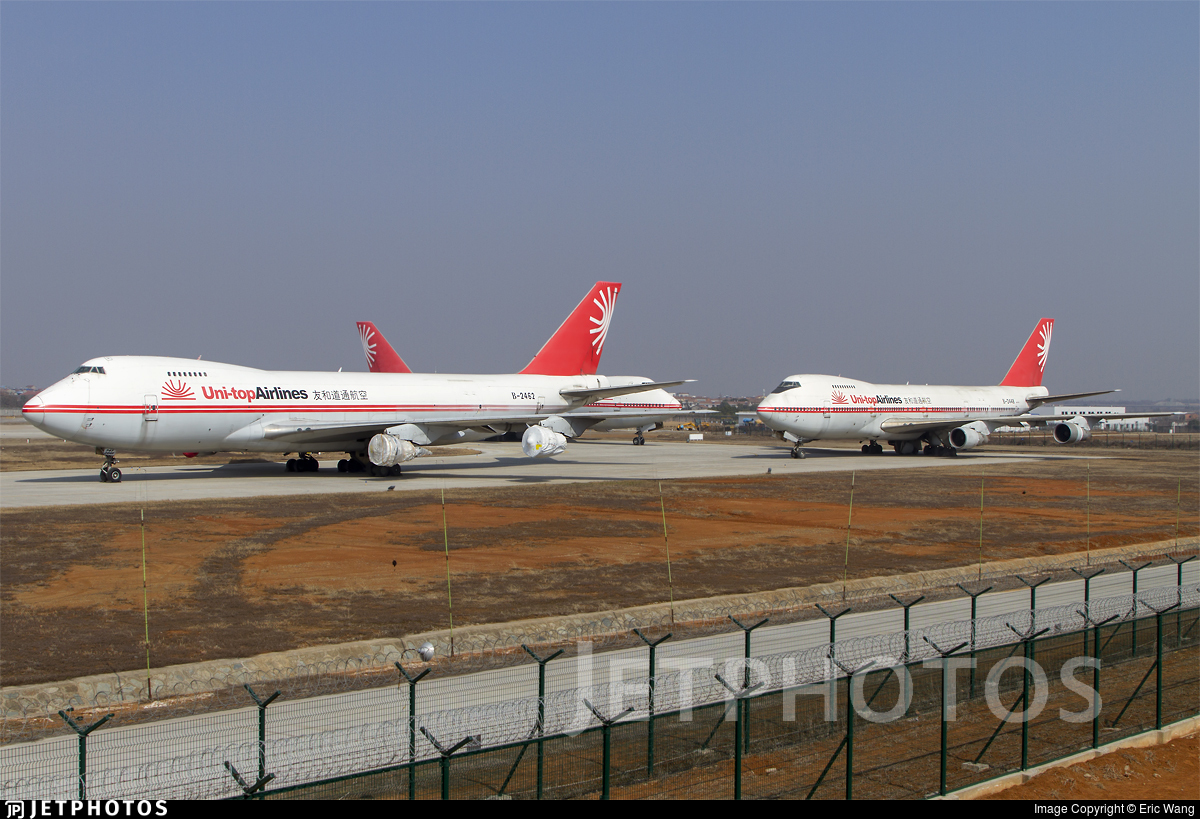
Uni-top’s 747 fleet was down to two units by 2017 and it is unclear when the last aircraft was retired. Certainly photographic evidence suggests that both B-2448 and B-2462 were in open storage at Wuhan by August.
THE MODEL
The format for my reviews is to split them into three key areas:
- The mould of the aircraft
- The paint and livery
- Printing and quality control
Each can get a maximum score of 10 for a section giving a maximum combined total score of 30.
THE MOULD
I have studiously avoided buying Phoenix 747s of any variant that utilise the 2008 mould but have never fully been able to put my finger on why I dislike the mould so much. This is a shame as Phoenix have made several models I would have liked to purchase (like Air Siam). Now with this Uni-Top I finally get to see the mould in hand and is it so bad? Well yes it is.
The nosecone and cockpit region of the forward fuselage are good. The nose could be a little pointier but overall this part of the mould works well. The same can’t be said for the nosegear. The tyre is too large (fairly common for Phoenix) and the gear leg is not in the correct position. The leg is too far aft and its forward margin should be in line with the rear of the cockpit windows. The gear leg itself is very detailed but that can’t offset its position.
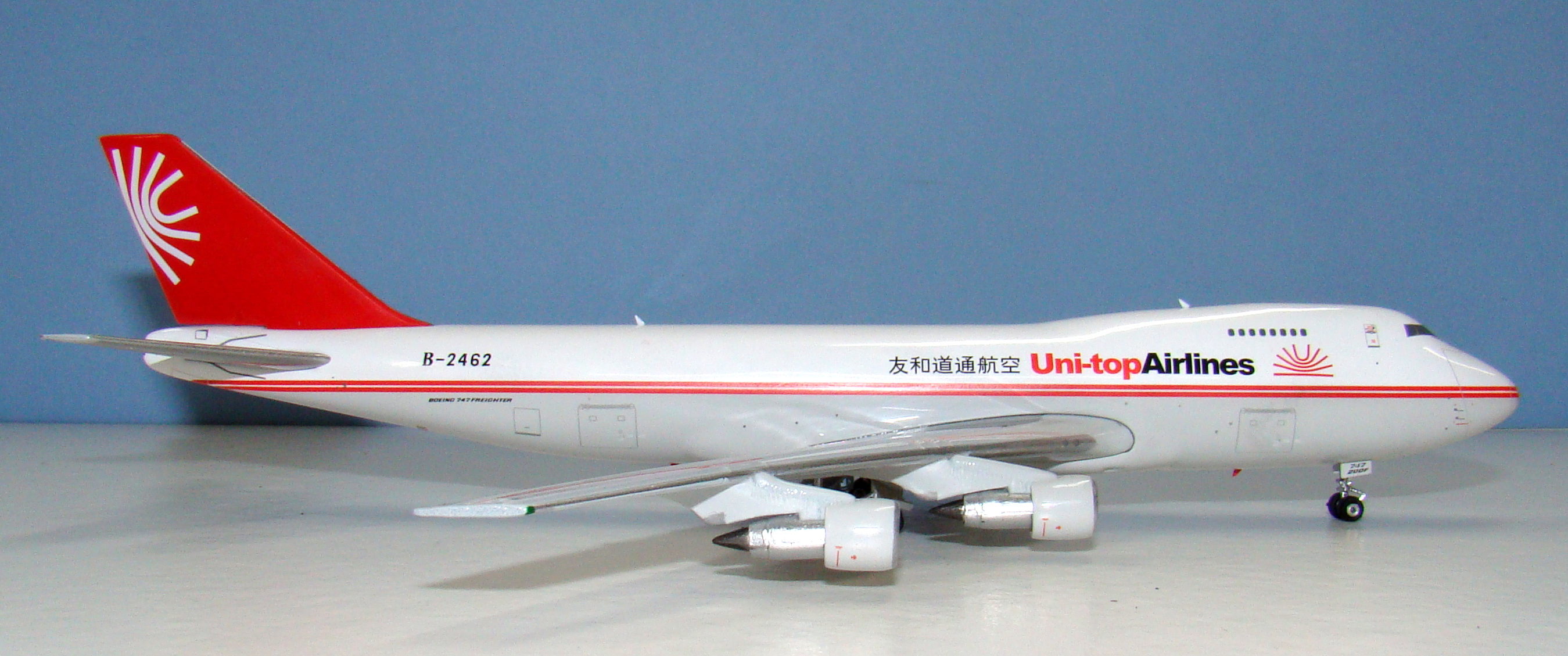
The fuselage behind the wings is also very good with an excellent shape and vertical stabiliser. The horizontal stabilisers are well shaped but are fitted too flat and do not angle upwards as they should. In fact this carries forward to the wings and is the largest issue with the mould. The entire wing is fitted roughly in the right place but bizarrely the wingtips are almost lower than the fuselage join. Comparing this mould to the BigBird 747 shows this clearly. I think this is what gives the mould such an odd appearance.

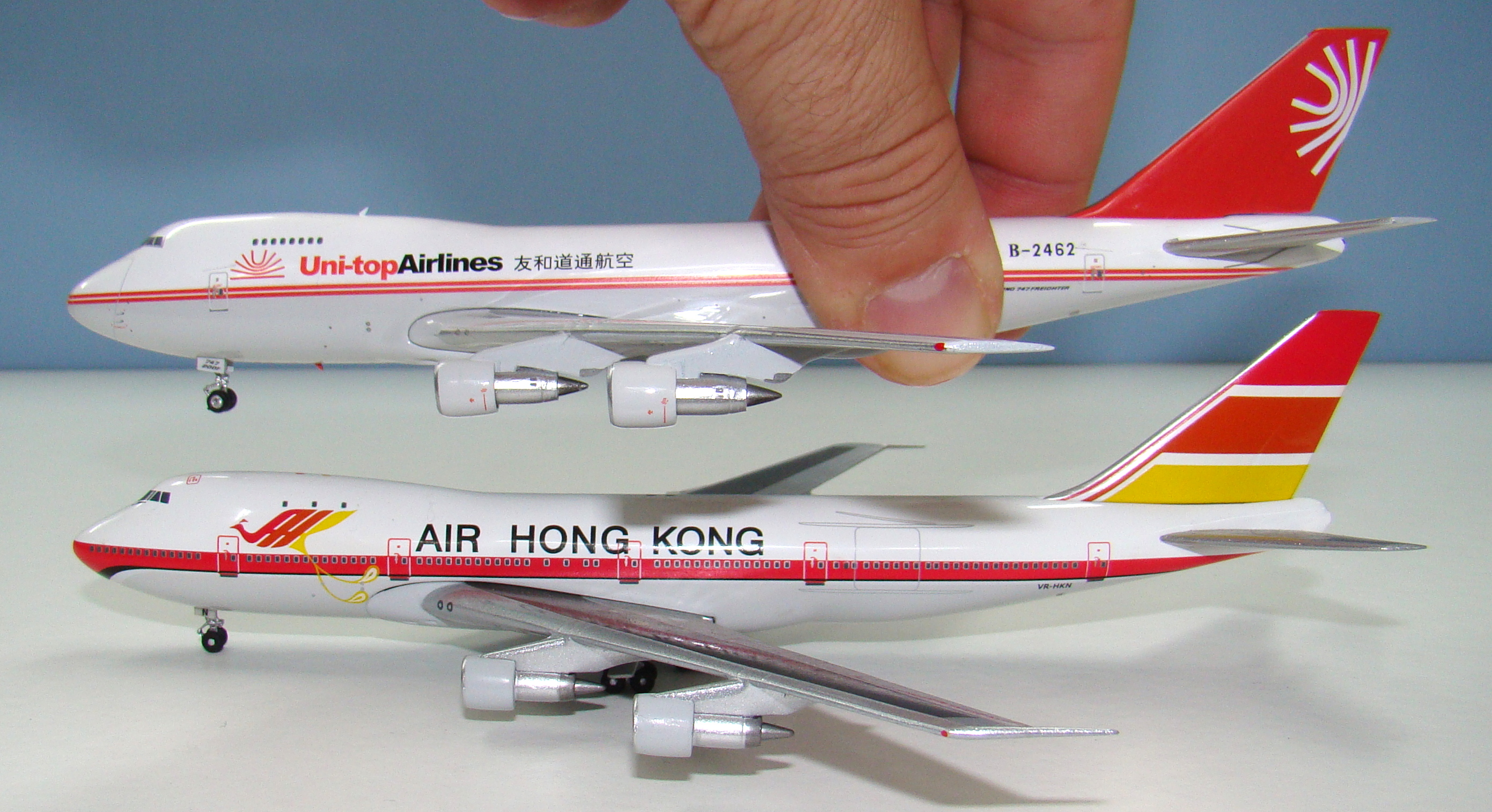
It is not the only issue around the wings either. The mould is a slot in wings example rather than a cradle mount, however I have to say that the wing join of the slot in mould rather takes away from the natural wing join fairing line (which the BigBird 747’s seam uses).
The engine pylons also cause me concern. They are rather poorly detailed and fitted plus seemingly too high. This is accentuated by the low wing but the overall impression is that they are hanging too low off the wing and would be close to ground hugging if the undercarriage tyres weren’t oversized.
On the plus side the mould does come with 4 aerials, however as JC Wings have sometimes found attaching aerials to a poor mould rarely does much for it and is akin to putting lipstick on a pig. In my opinion the Phoenix 747s are the worst widebody mould in use in 1:400 today. The combination of nosegear and wing failings really damages the mould’s aesthetics. Put new wings on this mould and it wouldn’t be half bad but as it is it is poor.
SCORE – 5
PAINT & LIVERY
Despite being a relatively new airline Uni-top have a livery that could date from the 1970s. It consists simply of two low thing cheatlines with a grey belly. The colour is mainly a light orange whilst the Uni-top logo is a kind of unfolding U.
The Uni-top colour sometimes looks darker in photos but looking at a wide variety of shots the true colour is a mid-orange as opposed to the almost red that Phoenix have used here. It’s not a great start and is not helped by the fact Phoenix have recreated the thin cheatlines too thinly. They should be at least a half-mm thicker each. The U logo on the fuselage also suffers from this as the lower elements of it ought to be thicker than the U at the top. They are not on the model.
The airline titles and registration are well done, with the latter utilising the correct serif style font that is similar to that used by Hainan Airlines but almost nobody else. The tail logo is also fine. This is a simple livery but a lack of attention to detail ha cost Phoenix points here.
SCORE – 6
PRINTING & QUALITY CONTROL
There’s always plenty of printing detail to be had on a cargo aircraft, especially one that is fitted with both a nose and side cargo door as this 747 is. Printing detail isn’t really the forte of Phoenix but they have had a decent stab at it here. The nose door and radome are printed well and ‘747 200F’ titling on the nosegear door is good. The side cargo door is present but rather softly printed and feels a little flat. The starboard upper deck door is present but printed too small. On the plus side Phoenix have printed the correct number of upper deck windows (being a full 747-200F this aircraft has less than the other Uni-top 747s).
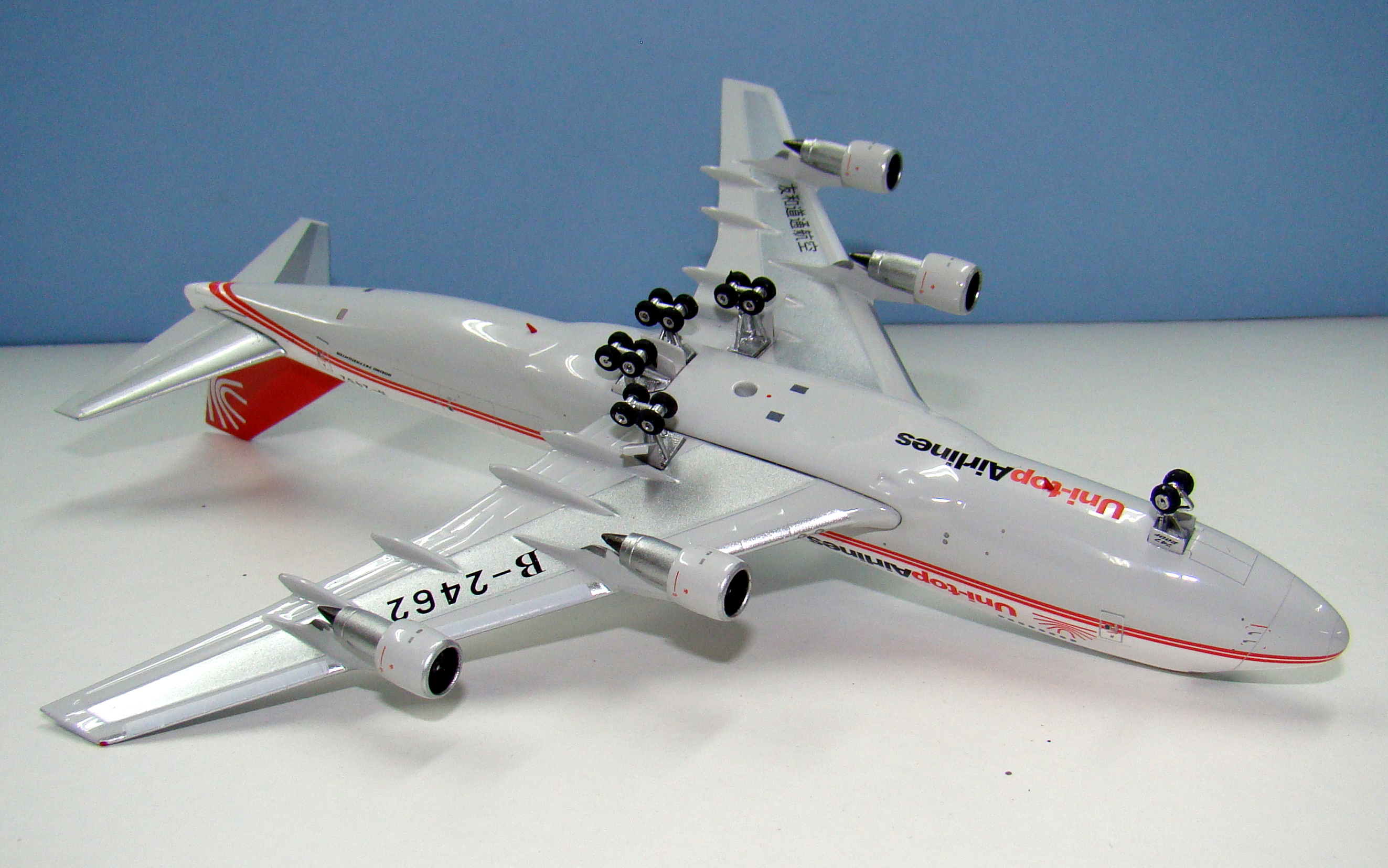
In other places the printing is often literally absent. The engine pylons are just grey slabs, the tail (overpainted so much that you can’t see the rudder lines of the mould) isn’t reinforced with printed lines and the underside printing almost non-existent (there aren’t even any maingear doors). Phoenix have a tendency to rely on mould detailing over printing, which just doesn’t work well, especially when the paint is quite thick and glossy.
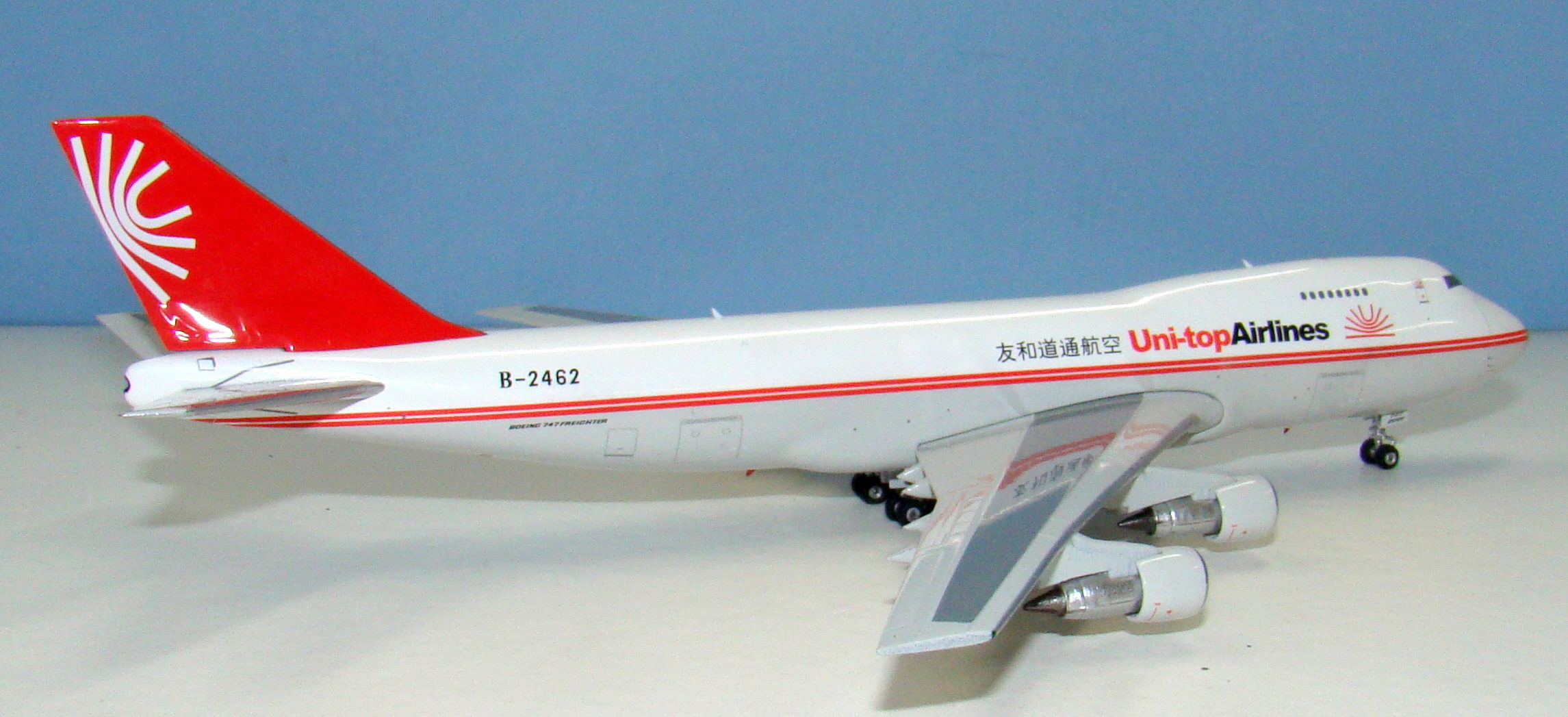
The model is put together well, although I admit it came with a nosegear tyre detached. It was easily reattached although the nose tyres are rather loosely fitted and of course come with an obligatory tyre tab.
SCORE – 7
CONCLUSION
At a distance this model looks professional but as soon as you compare it to a real 747 or one of the better 1:400 747 moulds its weaknesses become apparent. It doesn’t help that Phoenix are just rather lazy on their livery research and printing. The end result is a sparkly new looking model but one that has a rather toy-like air about it. The score simply reflects the effort put in.
FINAL SCORE – 18


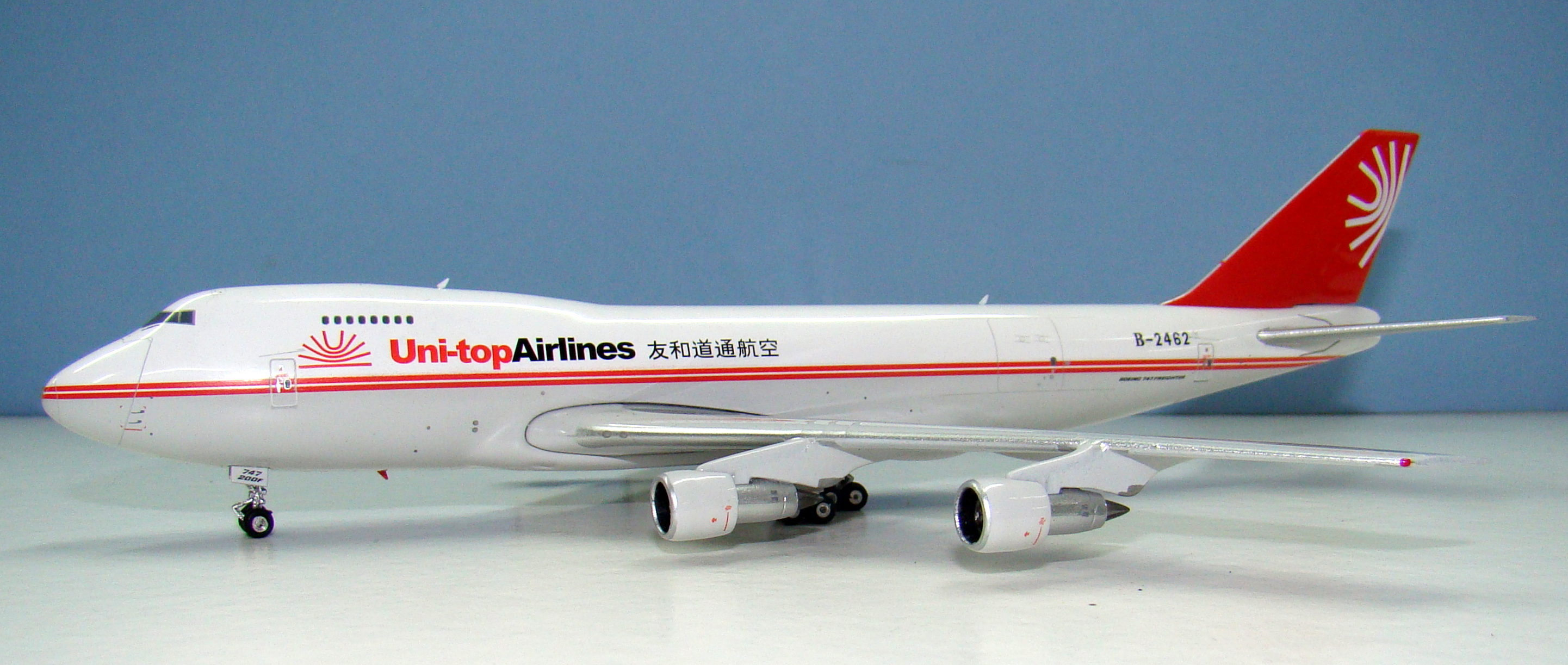
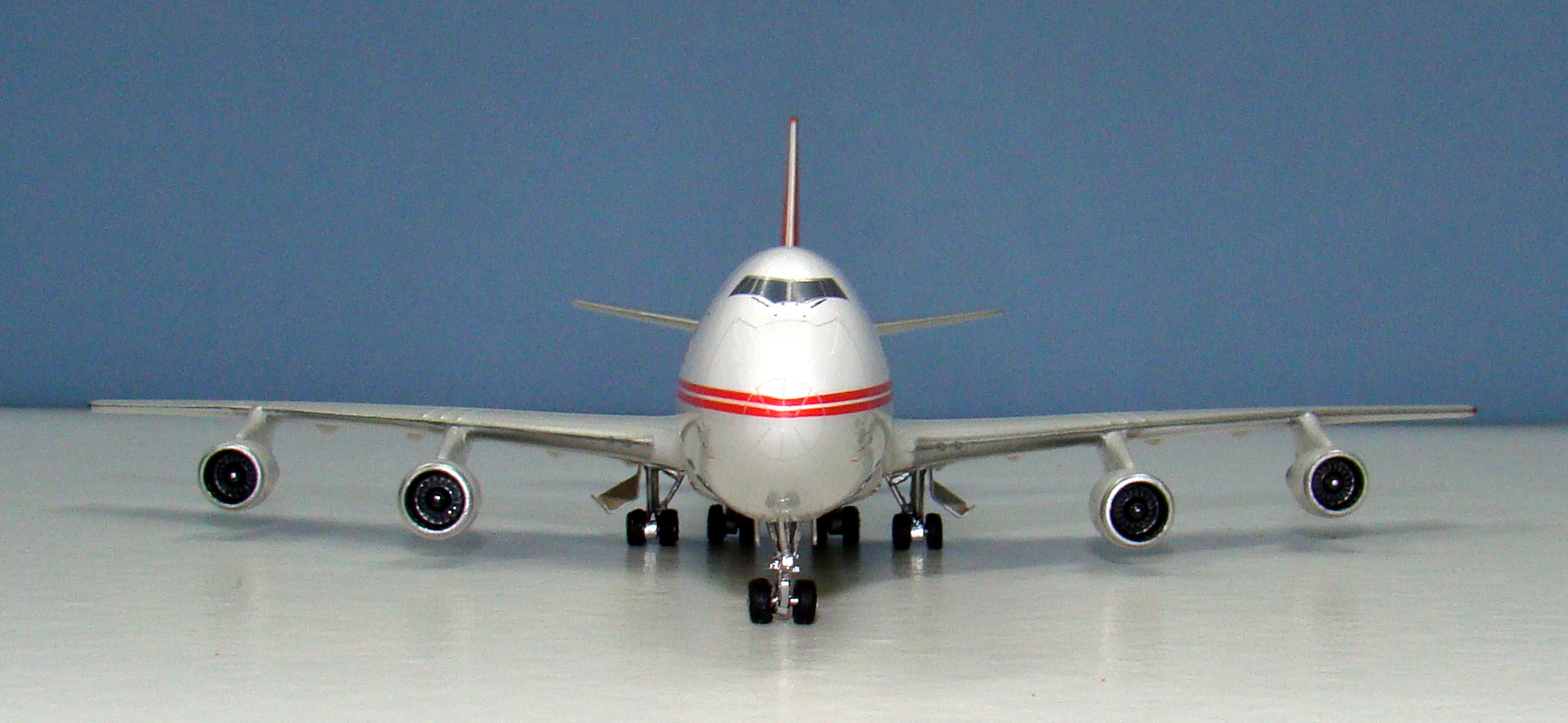
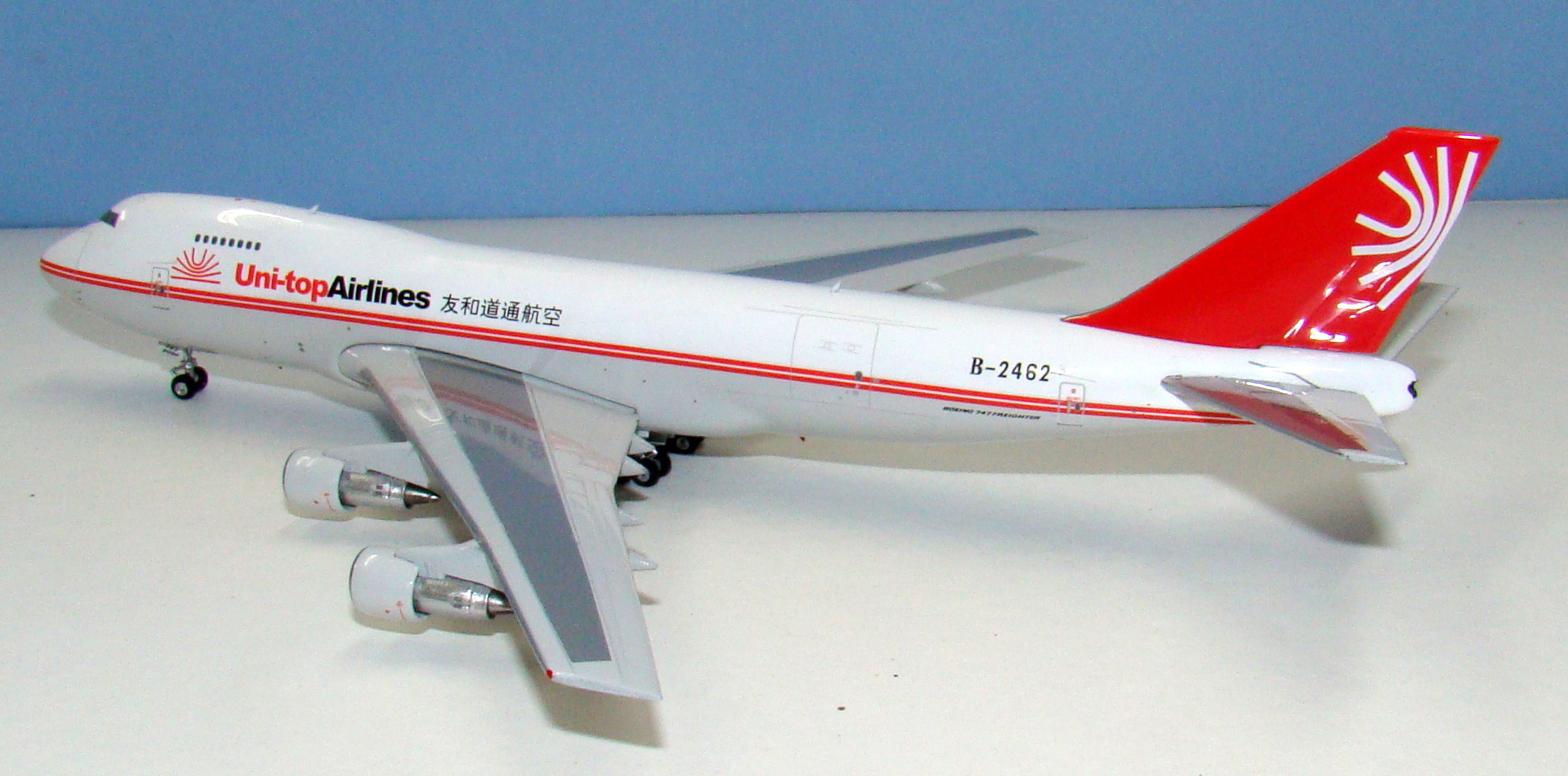
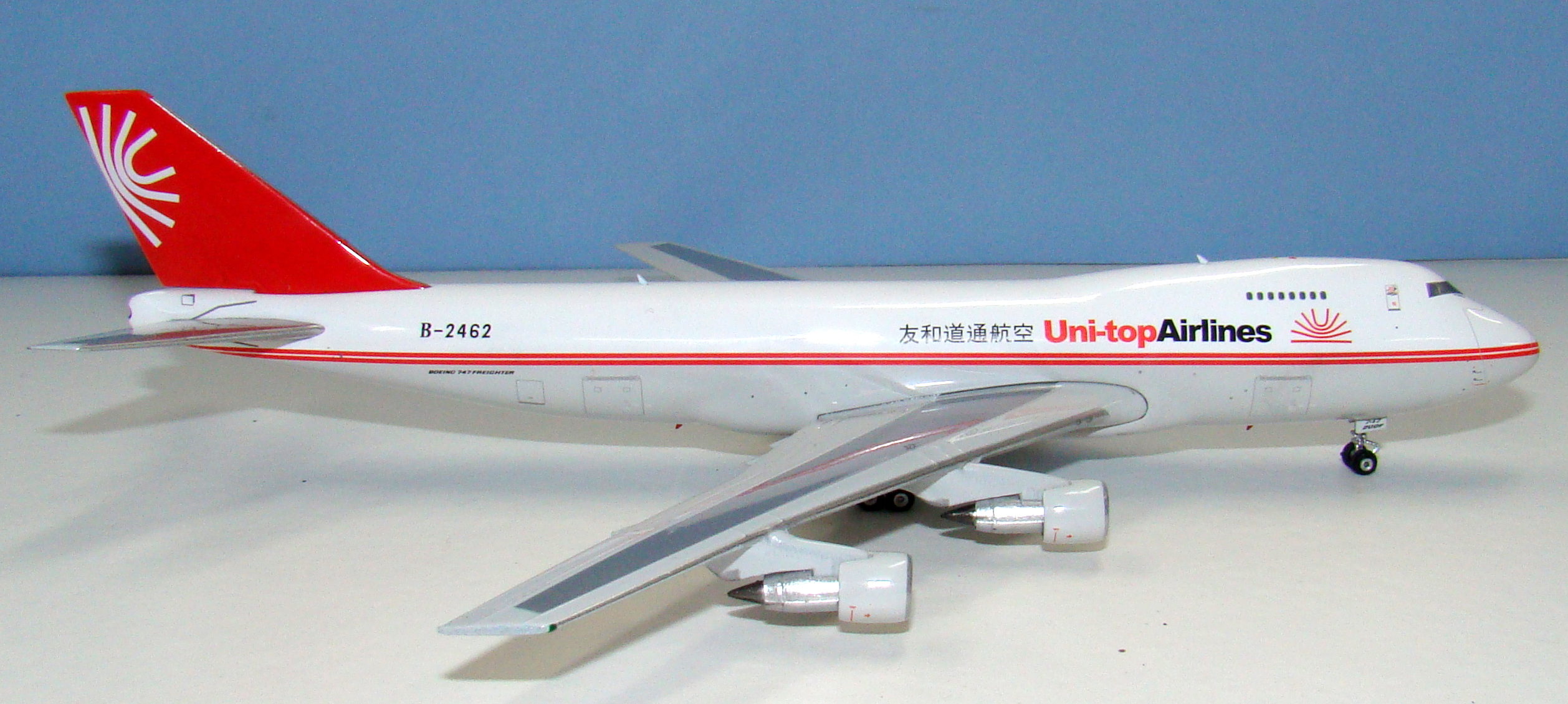
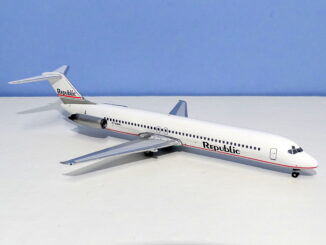
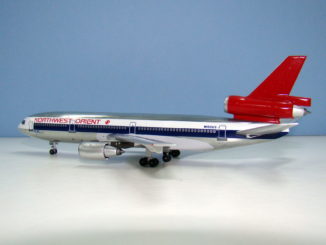
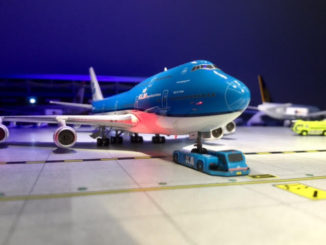
This is horrible!!! there’s no comparison to my dragon wings 747’s… I would absolutely not buy this thing… Its worse than the ultra flex wings on 787
Hopefully another classic 747 mould will come along soon. It’s a pity the Phoenix is so disappointing (the 400 too) and that Gemini never use their classic 747 mould either.
Sounds like a job for a new kid on the block, NG maybe ?